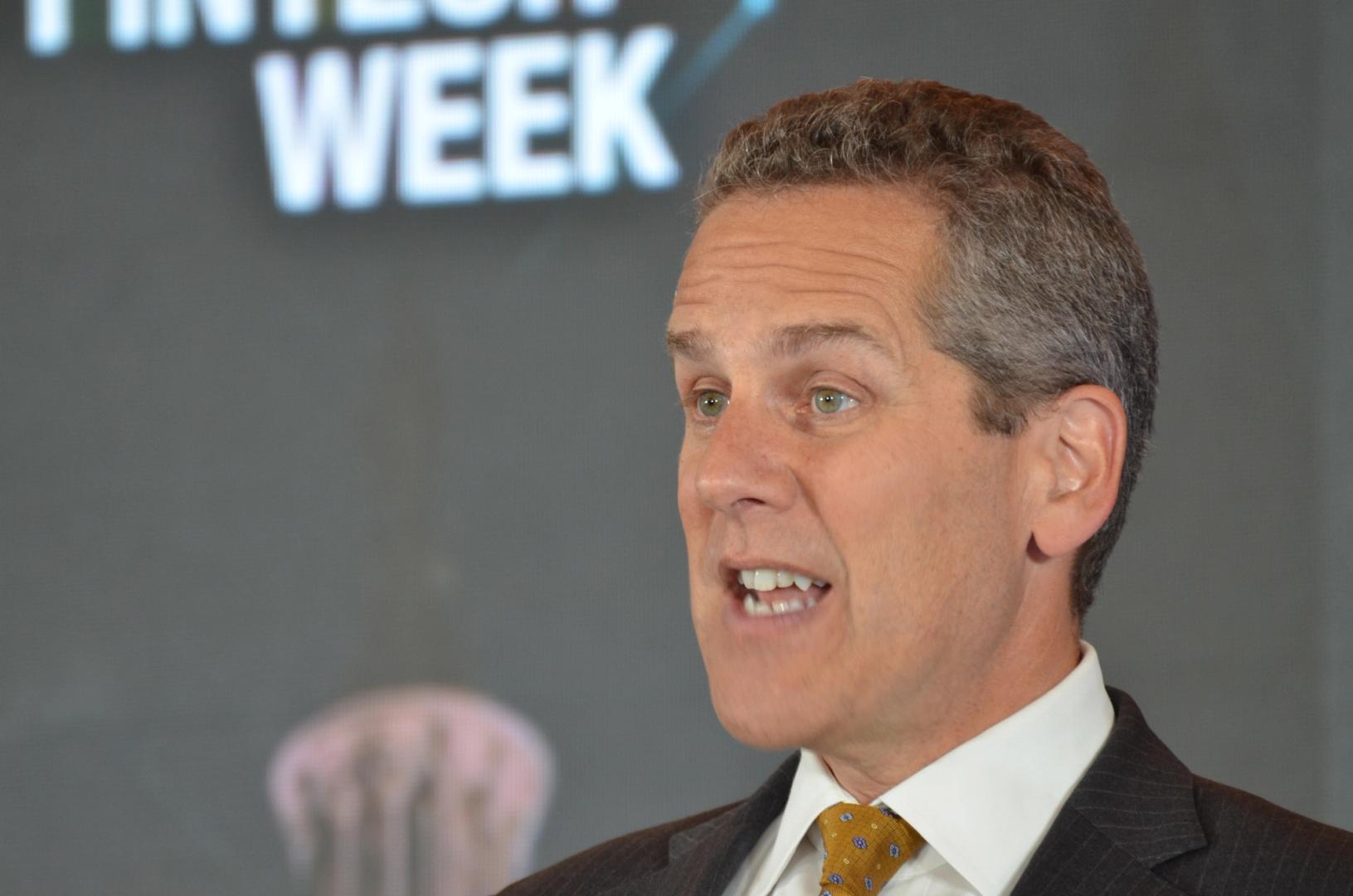
WASHINGTON, DC – The crypto sector and some of Wall Street’s financial giants are racing to implement stablecoin infrastructure long before U.S. regulators set their regulations, and Federal Reserve Governor Michael Barr took a moment Thursday to remind industry legal experts of the dangers posed by nominal assets. insurance.
“Issuing liquid liabilities redeemable at par but backed by assets, even high quality, about which creditors might have questions makes private money vulnerable to risk,” Barr said during a DC Fintech Week event in Washington, noting that permitted reserves, such as uninsured deposits, could pose dangers.
He was the Federal Reserve’s top financial oversight official and the board’s previous vice chairman in that role, but resigned when President Donald Trump’s administration took over. The digital asset sector saw Barr as part of the “debanking” trend in which industry experts accused banking regulators of encouraging banks to walk away from their businesses, and the Federal Reserve and other US regulators recently reversed the more restrictive crypto policy stance they had adopted during his tenure.
But Barr remains on the Fed’s seven-member board and warned agencies drafting rules for stablecoins, including his own, about “the long and painful history of private money created without insufficient safeguards.”
Barr offered the US experience with money market funds as an example, noting that the Primary Reserve Fund “lost its value of $1 per share” in 2008 when the global financial crisis began, and how the most recent Covid pandemic put pressure on those funds again.
Despite the passage of the Guidance and Establishment of National Innovation for US Stablecoins (GENIUS) Act, banking regulators have not yet written the rules they will need to implement it, leaving the industry in something of an unregulated gray area. While this continues, the world’s leading stablecoin, Tether’s USDT, is managed offshore and under a reserve approach that would not qualify for the pending US standard (although Tether is also planning a full entry into US markets).
“Stablecoin issuers traditionally retain profits from investment in reserve assets and therefore have a high incentive to maximize the return on their reserve assets by widening the risk spectrum as much as possible,” Barr noted. “Expanding the limits of allowable reserve assets can boost profits in good times, but risks a crack in confidence during inevitable bouts of market stress.”
“For the most part, I agree with everything he says,” said Corey Then, vice president and deputy general counsel for global policy at Circle, the issuer of USDC, the major U.S.-based stablecoin.
“There is a lot of work to do in the rulemaking process,” the Circle executive said at the same event in Washington, taking the stage just after Barr. “The last thing we want at Circle is a permissive environment.”
Barr highlighted the inclusion of uninsured deposits as potential reserves for issuers under GENIUS, noting that they were “a key risk factor during the March 2023 banking stress.” He also pointed to the so-called “overnight repo” as a reserve component that “could include potentially volatile assets.”
During the 2023 crisis among US tech-focused banks, Circle had up to 8% of its reserves in the failed Silicon Valley Bank, worth more than $3 billion, sparking a rush to bail out USDC that temporarily took it out of its peg to the dollar. Other high-profile stablecoins have also deviated from pegging, including Terra’s UST implosion in 2022.
Barr offered a hypothetical GENIUS Act, suggesting that because bitcoin has been legal tender in El Salvador, one could argue in favor of repoing bitcoin as an eligible reserve asset.
Federal and state regulators should draft “a comprehensive set of rules that can fill important gaps and ensure strong guardrails are in place to protect stablecoin users and mitigate broader risks to the financial system,” Barr said.
Still, because issuers can be regulated across a spectrum of government agencies at both the federal and state levels, he warned of the risk of arbitrage in which issuers look to the easiest watchdog, despite the GENIUS Act’s intention for them to be substantially similar.
In the 2008 crisis, American International Group’s risky financial products arm was overseen by a weaker federal regulator (the Office of Thrift Supervision) and many of its other operations by a series of state supervisors, leading to inadvertent dangers that eventually threatened the broader financial system. (The OTS was later dissolved).
Read more: Tether CEO says he’ll accept GENIUS to come to US, Circle says it’s ready



